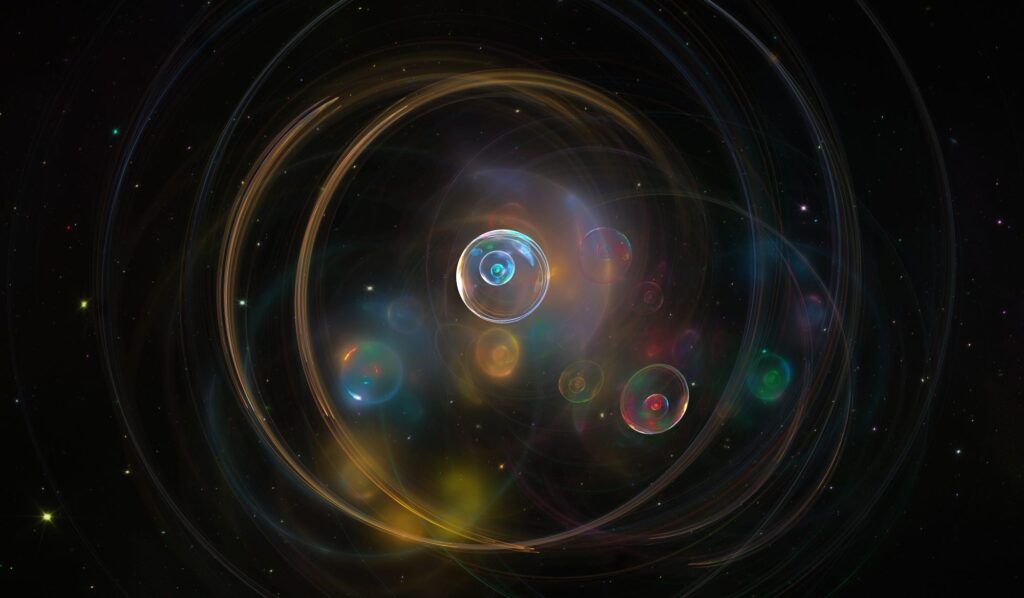Scientists at the Relativistic Heavy Ion Corridor (RHIC) have captured new evidence of Quark-Gluon plasma (an exotic state of matter that appears to have existed shortly after the Big Bang) that react when struck by a jet of energy particles.
Using precision photon jet measurements, researchers observed the dramatic “lateral splash” effect within this primitive soup, giving a deeper glimpse into one of the universe’s most extreme matters.
These findings not only unlock new cues about the early universe, but also challenge long-standing assumptions about the complete fluidity and energy dynamics of plasma.
What is Quark-Gluon Plasma?
Quark-Gluon Plasma (QGP) is a very hot and dense medium that filled the universe right after the Big Bang.
At that moment, basic particles, such as quarks and gluons (usually bound to the interior of protons and neutrons), roamed freely in a frictionless liquid like soup. Understanding this state of matter is important to clarify how the visible universe, including atoms and galaxies, ultimately formed.
To replicate and study QGP, researchers use Rhic, a powerful particle accelerator, at the Brookhaven National Laboratory at the US Department of Energy.
By putting together the gold nuclei at almost the speed of light, they temporarily dissolve the atomic components into less than a trillionth of a trillionth of a Quark-Gluon plasma.
Reconstruction of the Jet: a new window to the plasma
The new RHIC data focuses on the interaction between high-energy jets (cascades of particles emerging from violent collisions) and QGP.
Until now, most research has focused on “jet quenching.” The jet is weakened or scattered after moving the plasma. However, these studies often looked at only the best energy particles, providing incomplete pictures.
In this new analysis by Rhic’s Star Collaboration, scientists reconstruct the entire jet, which appears back to back with photons (particles of light). Photons do not interact with the Quark-Gluon plasma, thus acting as an accurate reference to the original energy of the jet.
By comparing the energy and spread of these jets, with or without QGP, scientists can effectively use the jets as a probe to illuminate the properties of the plasma, similar to how X-rays reveal structures within the human body.
Splash and sideways: wider cone of discovery
One of the most groundbreaking revelations from this study is to observe how energy is distributed when jets interact with QGP.
By reconstructing jets within different angle cones, from narrow to wide – scientists have discovered that energy is wider in collisions, including QGP. This suggests that when the jet passes through the plasma, it turns the energy sideways rather than directly forward.
The lateral distribution, often referred to as the splash effect, is similar to the way the bike wheels pour water when they hit a puddle. Jets lose energy by stimulating the surrounding plasma, which produces wider waves of detectable particles at the wider angular field.
This evidence clearly shows that the so-called “missing” energy is not lost, but is redistributed by interactions within the plasma.
The role of direct photons and advanced algorithms.
Detecting this subtle horizontal splash required sophisticated data analysis and accurate particle tracking.
The key was to identify “direct photons.” This is something that is emitted directly from the collision event, as opposed to that produced by the later attenuation process. These photons act like timestamps and appear at the same instant and energy levels as the partner jet.
Using finely tuned photon identification algorithms and advanced statistical techniques, the team was able to isolate these direct photon events.
From there, they reconstructed the associated jets and analyzed how they behaved differently in collisions that produced Quark-Gluon plasmas compared to Quark-Gluon plasmas, including simpler proton proton interactions.
Impact on the properties of QGP
These findings are not just better detections. It brings deep meaning to understand the physical properties of QGP.
In particular, the discovery that most of the lost jet energy can be recovered within a 30-degree cone is shining light on the viscosity and density of QGP, meaning how disturbing the plasma is due to the jet.
QGP is often described as an almost complete liquid with little resistance to flow. These new observations support that explanation and may help define a more accurate value for its viscosity, one of the most important properties of fluid dynamics.
Furthermore, understanding how energy loss depends on the path of the jet through the plasma opens the door for more detailed mapping of QGP. Scientists aim to determine whether jet travel distance or interaction strength plays a greater role in energy dissipation.
By continuing to improve jet and photon tracking techniques, researchers are turning Rhic into a time machine of sorts.
Quark-Gluon plasma continues to be one of the most exciting frontiers as researchers push the boundaries of high-energy physics.
Source link

